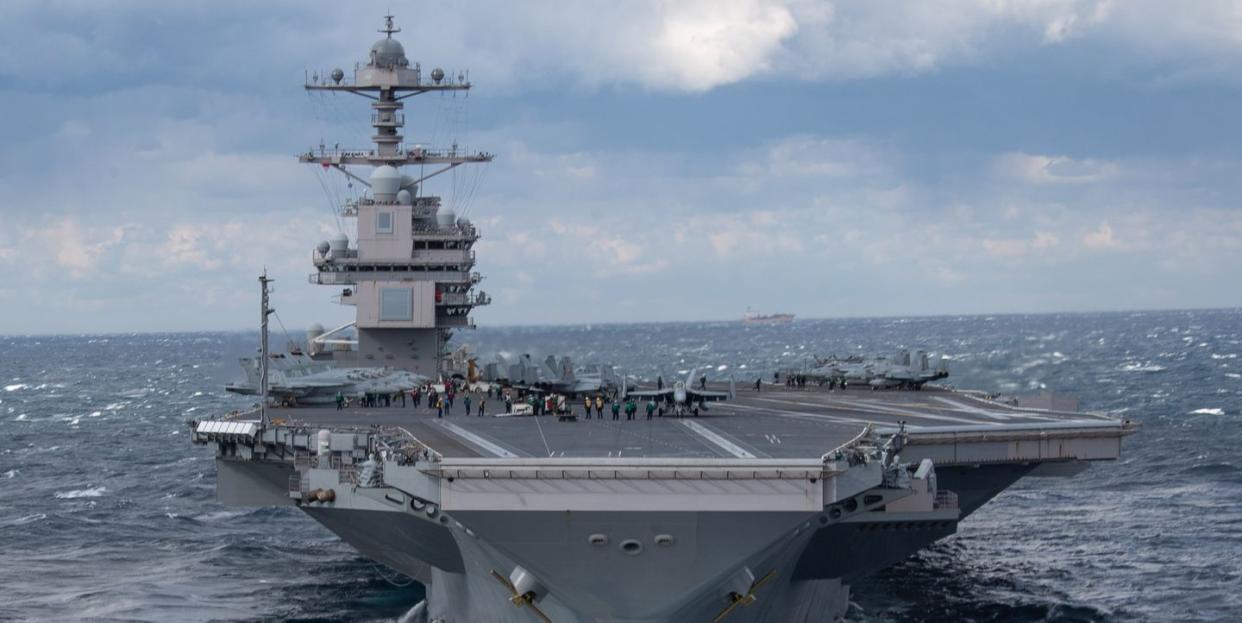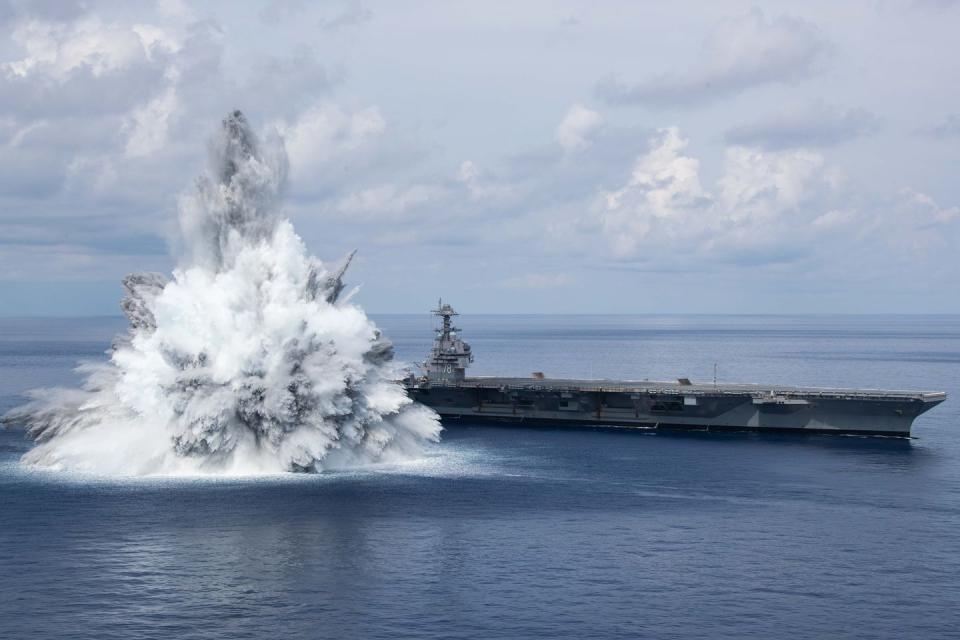The Most Expensive Warship Ever Built Is (Finally) Ready for Action

The U.S. Navy quietly declared the controversial aircraft carrier USS Gerald R. Ford ready for combat in late 2021.
Ford, whose keel was laid in 2009, suffered from cost overruns and technical headaches that put it years behind schedule.
It’s a mystery why the Navy did not announce the news about the aircraft carrier until now.
The aircraft carrier USS Gerald R. Ford, the most expensive warship ever built, is finally ready for combat duty. The U.S. Navy quietly approved the ship for initial operations capability during the tail end of 2021, with little to no fanfare—an unusual ending to a ship development process that saw more than a half-decade of terrible publicity. Ford will head out for its first deployment later this year, four years later than originally planned.
🛳 You love badass ships. So do we. Let’s nerd out over them together.
Gerald R. Ford is the first of the Ford-class aircraft carriers; the class will eventually replace existing Nimitz-class carriers. As the first class in decades, Ford-class ships will integrate a whole slew of new technologies. Ford was designed with a new radar system, the Dual-Band Radar; new electromagnetically-powered aircraft launch catapults and weapons elevators; new aircraft arresting gear; and more. The result was supposed to be a highly efficient warship capable of more aircraft sorties.

Unfortunately, much of the new equipment ran into serious technical problems. While these issues were gradually knocked out, the most pervasive problem—the advanced weapons elevators (AWEs) that lifted aircraft bombs and missiles from the bowels of the ship to the flight deck—was only completely solved last year. The program manager for Ford, quoted in DefenseOne, tied the eventual AWE solution to the ship’s initial-operations-capable declaration.
Initial operations capable (IOC) is a term used to describe new weapons systems that have been certified as cleared for certain combat duties. It does not mean that the weapon system is rated to conduct all of its combat duties, but it can conduct enough of them to be considered deployable for combat. It is not clear what, if anything, is holding Ford back from being considered fully operations-capable.
The U.S. Navy’s 100,000-ton, 1,092-foot-long super-carriers typically take five years to build. Construction on Ford began in 2009, but production difficulties meant she would only be commissioned in 2017, eight years later. Despite commissioning, she would be unable to actually serve as a fleet-ready aircraft carrier until December 2021.
Here’s a video of one of the advanced weapon elevators in operation, courtesy U.S. Naval Institute News:
According to the Congressional Research Service, USS Ford ultimately cost $13.3 billion, making her one of the most expensive (if not the most expensive) ships ever built. The cost does not include the unit cost of Ford’s 70+ aircraft, which will include 40 to 50 F/A-18E/F Super Hornets and F-35 Joint Strike Fighters; five EA-18G Growler electronic attack aircraft; 19 MH-60 Seahawk helicopters; four E-2D Hawkeye airborne early-warning aircraft; and two MV-22B Osprey cargo transports. It also does not factor in the cost of protecting the ship, which falls to a mixture of guided-missile cruisers, destroyers, and nuclear-powered attack submarines, and the logistics ships that keep Ford and her escorts supplied at sea.
It’s a bit of a mystery, as DefenseOne points out, why the U.S. Navy was so quiet about Ford’s IOC status. Ford’s news coverage has been deservedly negative over the years, as costs grew and equipment failed to work as advertised. Now that the long, tortured road is over, it should be time for the Navy to celebrate and communicate to the world that the ship is finally ready for duty.

In related news, shipyard Huntington Ingalls Industries laid the keel for the third Ford-class carrier, USS Enterprise. Enterprise will be the ninth U.S. Navy warship bearing the name; previous ships have included an aircraft carrier that served in World War II and the world’s first nuclear-powered aircraft carrier. At this rate, Enterprise should be commissioned in the 2027 to 2028 timeframe. The fourth carrier, USS Doris Miller, will follow her in the shipyard.
You Might Also Like

